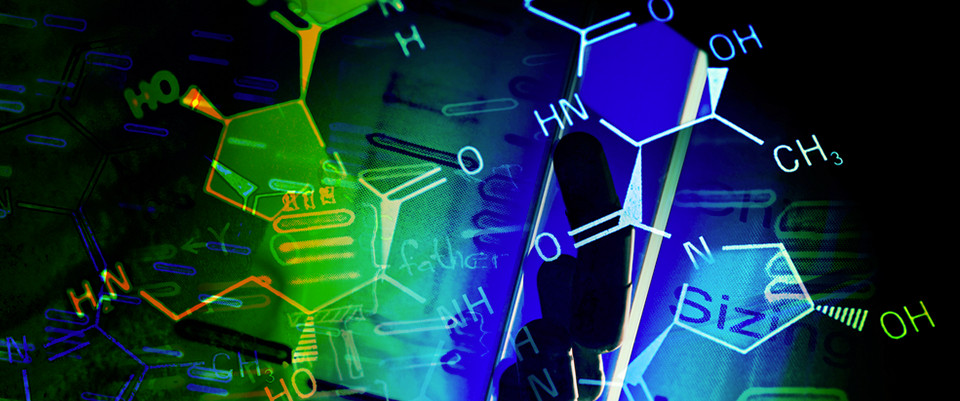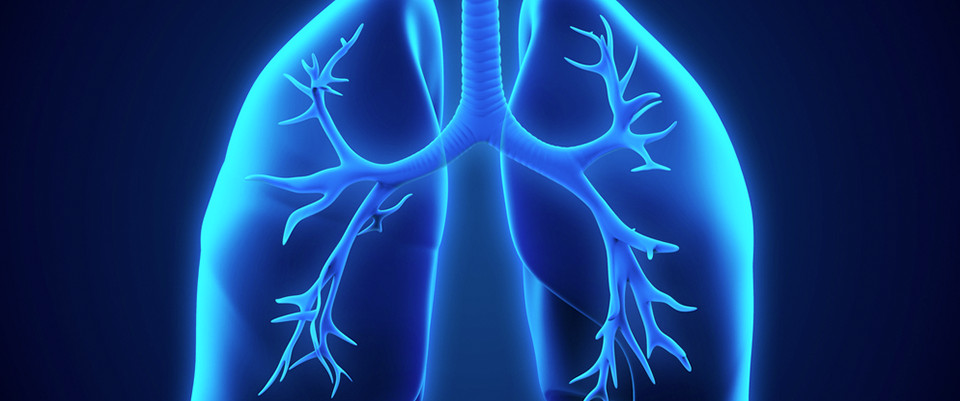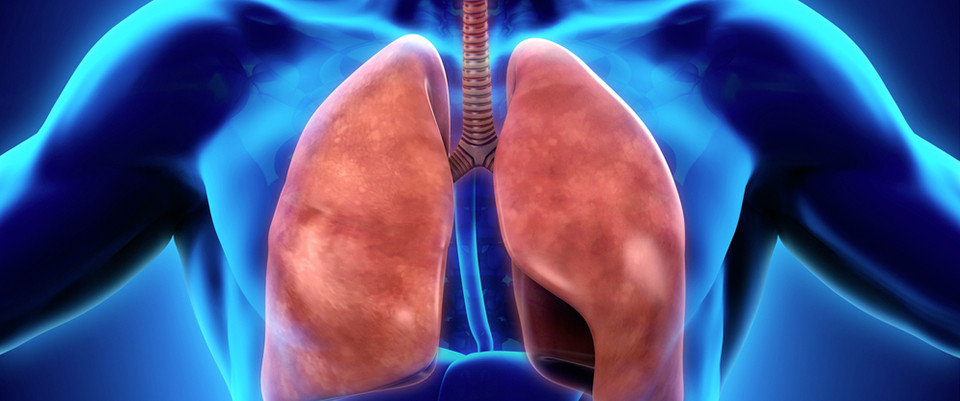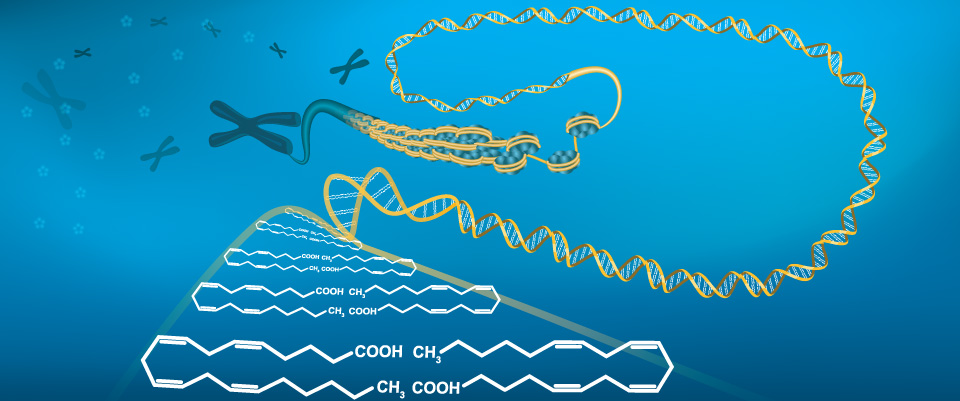PubMed
Arginine-deprivation-induced oxidative damage sterilizes Mycobacterium tuberculosis.
Related Articles
Arginine-deprivation-induced oxidative damage sterilizes Mycobacterium tuberculosis.
Proc Natl Acad Sci U S A. 2018 Aug 24;:
Authors: Tiwari S, van Tonder AJ, Vilchèze C, Mendes V, Thomas SE, Malek A, Chen B, Chen M, Kim J, Blundell TL, Parkhill J, Weinrick B, Berney M, Jacobs WR
Abstract
Reactive oxygen species (ROS)-mediated oxidative stress and DNA damage have recently been recognized as contributing to the efficacy of most bactericidal antibiotics, irrespective of their primary macromolecular targets. Inhibitors of targets involved in both combating oxidative stress as well as being required for in vivo survival may exhibit powerful synergistic action. This study demonstrates that the de novo arginine biosynthetic pathway in Mycobacterium tuberculosis (Mtb) is up-regulated in the early response to the oxidative stress-elevating agent isoniazid or vitamin C. Arginine deprivation rapidly sterilizes the Mtb de novo arginine biosynthesis pathway mutants ΔargB and ΔargF without the emergence of suppressor mutants in vitro as well as in vivo. Transcriptomic and flow cytometry studies of arginine-deprived Mtb have indicated accumulation of ROS and extensive DNA damage. Metabolomics studies following arginine deprivation have revealed that these cells experienced depletion of antioxidant thiols and accumulation of the upstream metabolite substrate of ArgB or ArgF enzymes. ΔargB and ΔargF were unable to scavenge host arginine and were quickly cleared from both immunocompetent and immunocompromised mice. In summary, our investigation revealed in vivo essentiality of the de novo arginine biosynthesis pathway for Mtb and a promising drug target space for combating tuberculosis.
PMID: 30143580 [PubMed - as supplied by publisher]
Differential effects of restrictive and malabsorptive bariatric surgery procedures on the serum lipidome in obese subjects.
Related Articles
Differential effects of restrictive and malabsorptive bariatric surgery procedures on the serum lipidome in obese subjects.
J Clin Lipidol. 2018 Jul 25;:
Authors: Ramos-Molina B, Castellano-Castillo D, Alcaide-Torres J, Pastor Ó, de Luna Díaz R, Salas-Salvadó J, López-Moreno J, Fernández-García JC, Macías-González M, Cardona F, Tinahones FJ
Abstract
BACKGROUND: Bariatric surgery (BS) is the most effective treatment for severe obesity. Our group and others have previously reported that the type of BS (restrictive vs malabsorptive) can lead to different effects on the lipid profile and glucose homeostasis in morbidly obese patients. Furthermore, BS exerts significant changes in lipid metabolism, which are not yet fully understood and that might be dependent of surgical technique.
OBJECTIVE: The objective of this study was to evaluate the differential changes in the serum lipidomic profile of morbidly obese subjects who underwent two different BS techniques: sleeve gastrectomy (SG) (restrictive) and biliopancreatic diversion (BPD) (malabsorptive).
METHODS: This study included 37 morbidly obese patients (body mass index ≥ 40 kg/m2) who underwent either SG (n = 25) or BPD (n = 12). Serum lipid extracts were assessed at baseline and 6 months after BS and were analyzed in a ultra-high performance liquid chromatography time-of-flight mass spectrometry-based platform.
RESULTS: SG not only restores the circulating levels of fatty acids and glycerolipids to similar levels to those observed in nonobese subjects but also results in a consistent increase of phospholipid and sphingolipid species, ranging from antioxidant plasmalogens to lipotoxic ceramides. BPD, however, leads to an overall reduction in circulating fatty acids, glycerolipids, phospholipids and sphingolipids, and a substantial increase of bile acids.
CONCLUSION: Our lipidomic analysis suggests that the differential metabolic effects typically observed after restrictive vs malabsorptive BS procedures could be explained, at least partially, to BS-specific lipid changes and provides novel aspects of lipid remodeling in obesity during weight loss.
PMID: 30143432 [PubMed - as supplied by publisher]
Dilution correction for dynamically influenced urinary analyte data.
Related Articles
Dilution correction for dynamically influenced urinary analyte data.
Anal Chim Acta. 2018 Nov 22;1032:18-31
Authors: Hertel J, Rotter M, Frenzel S, Zacharias HU, Krumsiek J, Rathkolb B, Hrabe de Angelis M, Rabstein S, Pallapies D, Brüning T, Grabe HJ, Wang-Sattler R
Abstract
Urinary analyte data has to be corrected for the sample specific dilution as the dilution varies intra- and interpersonally dramatically, leading to non-comparable concentration measures. Most methods of dilution correction utilized nowadays like probabilistic quotient normalization or total spectra normalization result in a division of the raw data by a dilution correction factor. Here, however, we show that the implicit assumption behind the application of division, log-linearity between the urinary flow rate and the raw urinary concentration, does not hold for analytes which are not in steady state in blood. We explicate the physiological reason for this short-coming in mathematical terms and demonstrate the empirical consequences via simulations and on multiple time-point metabolomic data, showing the insufficiency of division-based normalization procedures to account for the complex non-linear analyte specific dependencies on the urinary flow rate. By reformulating normalization as a regression problem, we propose an analyte specific way to remove the dilution variance via a flexible non-linear regression methodology which then was shown to be more effective in comparison to division-based normalization procedures. In the progress, we developed several, easily applicable methods of normalization diagnostics to decide on the method of dilution correction in a given sample. On the way, we identified furthermore the time-span since last urination as an important variance factor in urinary metabolome data which is until now completely neglected. In conclusion, we present strong theoretical and empirical evidence that normalization has to be analyte specific in dynamically influenced data. Accordingly, we developed a normalization methodology for removing the dilution variance in urinary data respecting the single analyte kinetics.
PMID: 30143216 [PubMed - in process]
Effective mobility as a robust criterion for compound annotation and identification in metabolomics: Toward a mobility-based library.
Related Articles
Effective mobility as a robust criterion for compound annotation and identification in metabolomics: Toward a mobility-based library.
Anal Chim Acta. 2018 Nov 22;1032:178-187
Authors: Drouin N, Pezzatti J, Gagnebin Y, González-Ruiz V, Schappler J, Rudaz S
Abstract
Capillary electrophoresis (CE) presents many advantageous features as an analytical technique in metabolomics, such as very low consumption of a sample or the possibility to easily detect very polar and ionizable compounds. However, CE remains an approach only used by a few research groups due to a relatively lower sensitivity and, higher analysis time compared to liquid chromatography. To circumvent these drawbacks, herein we propose a generic CE-mass spectrometry (MS) approach using positive electrospray ionization mode and performing normal- and reverse-polarity CE separations to analyze anionic and acidic compounds. Preliminary experiments showed better sensitivity using the ESI positive mode compared to the ESI negative mode on a set of representative anionic compounds from different biochemical families. This approach was applied to the investigation of an available library of metabolites. More than 450 compounds out of the 596 in the library were detected, with the possibility to monitor negatively ionizable compounds through their ammonium adducts. Migration time of each data point was converted to an effective mobility (μeff) scale and used for peak alignment in data pre-processing; μeff features were used as a robust migration index for peak annotation and identification criterion. For the first time, a large database based on experimental μeff was built, allowing for the straightforward annotation of detected features in biological samples and demonstrating how CE-MS can complement other analytical techniques commonly used in metabolomics.
PMID: 30143215 [PubMed - in process]
Assessing the impact of wastewater treatment plant effluent on downstream drinking water-source quality using a zebrafish (Danio Rerio) liver cell-based metabolomics approach.
Related Articles
Assessing the impact of wastewater treatment plant effluent on downstream drinking water-source quality using a zebrafish (Danio Rerio) liver cell-based metabolomics approach.
Water Res. 2018 Aug 14;145:198-209
Authors: Zhen H, Ekman DR, Collette TW, Glassmeyer ST, Mills MA, Furlong ET, Kolpin DW, Teng Q
Abstract
Cell-based metabolomics was used in a proof-of-concept fashion to investigate the biological effects of contaminants as they traveled from a wastewater treatment plant (WWTP) discharge to a drinking water treatment plant (DWTP) intake in a surface-water usage cycle. Zebrafish liver (ZFL) cells were exposed to water samples collected along a surface-water flowpath, where a WWTP was located ∼14.5 km upstream of a DWTP. The sampling sites included: 1) upstream of the WWTP, 2) the WWTP effluent discharging point, 3) a proximal location downstream of the WWTP outfall, 4) a distal location downstream of the WWTP outfall, 5) the drinking water intake, and 6) the treated drinking water collected prior to discharge to the distribution system. After a 48-h laboratory exposure, the hydrophilic and lipophilic metabolites in ZFL cell extracts were analyzed by proton nuclear magnetic resonance (1H NMR) spectroscopy and gas chromatography-mass spectrometry (GC-MS), respectively. Multivariate statistical analysis revealed distinct changes in metabolite profiles in response to WWTP effluent exposure. These effects on the hydrophilic metabolome gradually diminished downstream of the WWTP, becoming non-significant at the drinking water intake (comparable to upstream of the WWTP, p = 0.98). However, effects on the lipophilic metabolome increased significantly as the river flowed from the distal location downstream of the WWTP to the drinking water intake (p < 0.001), suggesting a source of bioactive compounds in this watershed other than the WWTP. ZFL cells exposed to treated drinking water did not exhibit significant changes in either the hydrophilic (p = 0.15) or lipophilic metabolome (p = 0.83) compared to the upstream site, suggesting that constituents in the WWTP effluent were efficiently removed by the drinking water treatment process. Impacts on ZFL cells from the WWTP effluent included disrupted energy metabolism, a global decrease in amino acids, and altered lipid metabolism pathways. Overall, this study demonstrated the utility of cell-based metabolomics as an effective tool for assessing the biological effects of complex pollutant mixtures, particularly when used as a complement to conventional chemical monitoring.
PMID: 30142518 [PubMed - as supplied by publisher]
The therapeutic effect of Ilex pubescens extract on blood stasis model rats according to serum metabolomics.
Related Articles
The therapeutic effect of Ilex pubescens extract on blood stasis model rats according to serum metabolomics.
J Ethnopharmacol. 2018 Aug 21;:
Authors: Cao D, Xu C, Xue Y, Ruan Q, Yang B, Liu Z, Cui H, Zhang L, Zhao Z, Jin J
Abstract
ETHNOPHARMACOLOGICAL RELEVANCE: Ilex pubescens Hook. et Arn (MDQ), a traditional Chinese herb, is used in the treatment of cardiovascular diseases. However, the mechanisms underlying the preventive effect of MDQ on blood stasis remain unclear.
AIM OF THE STUDY: In this study, serum metabolomics integrated with a biochemical assay strategy were established to evaluate the preventive effect and mechanism of action of MDQ on rats with acute blood stasis.
MATERIALS AND METHODS: Forty-nine rats were divided into seven groups: the control group, model group, aspirin treatment group (30mg/kg), clopidogrel treatment group (8mg/kg) and three MDQ treatment groups (250, 500 and 1000mg/kg). A hybrid quadrupole time of flight mass spectrometry (QTOF/MS) coupled to ultra-high-performance liquid chromatography (UPLC) was applied for profiling the serum metabolites. The multivariate data analysis techniques using unsupervised principal component analysis (PCA) and supervised orthogonal projections to latent structures discriminant analysis (OPLS-DA) were used for pattern recognition and distinguishing variabilities among groups.
RESULTS: MDQ protected the rats against blood stasis, as evidenced by the restoration of the anti-platelet aggregation activity, fibrinogen concentration, prothrombin time, thrombin time, activated partial thromboplastin time, endothelial nitric oxide synthase, endothelin, thromboxane B2 and 6-keto-prostaglandin F1α. The combination of PCA and OPLS-DA revealed deviations in eighteen differential biomarkers in serum. The identified biomarkers were primarily engaged in the metabolic pathways including arachidonic acid metabolism, glycerophospholipid metabolism, phospholipid biosynthesis and bile acid biosynthesis. The levels of eleven biomarkers showed significant alterations and a tendency to be restored to normal values in MDQ-treated blood stasis rats. Moreover, a correlation network diagram was constructed to show the serum biomarkers perturbed by MDQ.
CONCLUSIONS: These results suggested that MDQ had preventive effects on blood stasis in rats via arachidonic acid metabolism and glycerophospholipid metabolism.
PMID: 30142425 [PubMed - as supplied by publisher]
Probiotic supplements prevented oxonic acid-induced hyperuricemia and renal damage.
Related Articles
Probiotic supplements prevented oxonic acid-induced hyperuricemia and renal damage.
PLoS One. 2018;13(8):e0202901
Authors: García-Arroyo FE, Gonzaga G, Muñoz-Jiménez I, Blas-Marron MG, Silverio O, Tapia E, Soto V, Ranganathan N, Ranganathan P, Vyas U, Irvin A, Ir D, Robertson CE, Frank DN, Johnson RJ, Sánchez-Lozada LG
Abstract
Hyperuricemia is highly prevalent and especially common in subjects with metabolic, cardiovascular and renal diseases. In chronic kidney disease, hyperuricemia is extremely common, and uric acid (UA) excretion relies on gut uricolysis by gut microbiota. Current therapy for lowering serum UA includes drugs that may produce undesired secondary effects. Therefore, this pilot study was designed to evaluate the potential of two probiotic supplements to reduce systemic uric acid concentrations. Secondary objectives were to assess whether the hypouricemic effect related to a therapeutic benefit on the hyperuricemia-induced renal damage and hypertension. Analysis of fecal microbiota was also performed. Groups of 6 rats each were followed for 5 weeks and allocated in the following treatment groups: C = Control; HU-ND = Oxonic acid-induced hyperuricemia (HU) +regular diet; HU-P = HU+placebo; HU-F1 = HU+ probiotics formula 1 and HU-F2 = HU+ probiotics formula 2. We confirmed that oxonic acid-induced hyperuricemia produced hypertension and renal functional and structural changes, along with modest changes in the overall composition of fecal microbiota. Both probiotic-containing diets prevented HU, elevated UA urinary excretion and intrarenal UA accumulation induced by oxonic acid. The hypouricemic effect conferred by probiotic supplementation also prevented the renal changes and hypertension caused by hyperuricemia. However, probiotic treatment did not restore the fecal microbiota. In conclusion, we demonstrated for the first time the ability of probiotics containing uricolytic bacteria to lower serum uric acid in hyperuricemic animals with beneficial consequences on blood pressure and renal disease. As probiotics supplements are innocuous for human health, we recommend clinical studies to test if probiotic supplements could benefit hyperuricemic individuals.
PMID: 30142173 [PubMed - in process]
The mechanism of the preventive effect of Shen'an capsule on the calcium oxalate crystal-induced early renal injury based on metabolomics.
Related Articles
The mechanism of the preventive effect of Shen'an capsule on the calcium oxalate crystal-induced early renal injury based on metabolomics.
Biomed Chromatogr. 2018 Aug 23;:e4374
Authors: Fan W, Hou J, Zhu W, Zhang S, Shao K, Quan F, Chen W
Abstract
Kidney stone disease is a worldwide metabolism associated disorder with a high incidence of renal dysfunction. However, the effective methods to prevent crystalline nephropathy are still lacking with the absence of aetiological research. Shen'an (SA) capsules are prepared from Chinese medicinal compounds and are considered a promising treatment for the prevention of crystal-induced renal injury. In this study, twenty-four mice were randomly divided into 4 groups including the saline, oxalate, SA-treated (via preventive administration) and SA only groups. A metabolomics analysis based on ultra-high-performance liquid chromatography coupled with quadrupole time-of-flight mass spectrometry (UPLC-Q-TOF/MS) was performed to explore the plasma metabolic profiles among the different groups. As results, the amount of crystal deposition and declined kidney function were significantly alleviated by the prevention of SA capsule. A total of 24 metabolites that showed a reversal trend following SA capsule administration were identified as plasma biomarkerss of the preventive effects of SA capsules on crystal-induced renal injury. Most of these metabolites were involved in the metabolisms of lipid metabolism, energy metabolism, glutathione metabolism and vitamin metabolism. In conclusions, SA capsules exert a preventive effect in mice with crystal-induced kidney injury via the regulation of multiple metabolic pathways.
PMID: 30141275 [PubMed - as supplied by publisher]
The effects of disruption in membrane lipid biosynthetic genes on 1-butanol tolerance of Bacillus subtilis.
Related Articles
The effects of disruption in membrane lipid biosynthetic genes on 1-butanol tolerance of Bacillus subtilis.
Appl Microbiol Biotechnol. 2018 Aug 23;:
Authors: Vinayavekhin N, Vangnai AS
Abstract
Microbes with enhanced 1-butanol tolerance have the potentials to be utilized in various biotechnological processes. To achieve the rational design of such strains, we previously conducted an untargeted metabolomics analysis of Bacillus subtilis under 1-butanol stress and uncovered a novel type of microbial responses as the alterations in the glycerolipid and phospholipid composition. However, the current knowledge about the relevance of these changes on 1-butanol tolerance remains quite limited. Here, we constructed the B. subtilis mutants with disruption in the pssA, ugtP (U), mprF (M), yfnI, and yfnI/mprF genes in the membrane lipid biosynthetic pathways. The 1-butanol tolerance test indicated markedly increased and decreased 1-butanol resistance in M and U compared to the wild-type strain, respectively, and slight effects in other strains under high stress level. Further examination of the lipid contents of these strains in the presence of 1-butanol by liquid chromatography-mass spectrometry demonstrated an elevated ratio of neutral and anionic to cationic lipids in direct relation with an improved 1-butanol tolerance. Last, cell morphological studies showed the shortening of only the U cells, compared to the wild-type. All strains including U were capable of elongating by 14-24% under 1-butanol stress. Together, the studies indicated the involvement of membrane lipid biosynthetic genes, which regulated glycerolipid and phospholipid composition, on 1-butanol tolerance and allowed for the procurement of M with enhanced 1-butanol tolerance trait, highlighting the usefulness of the overall approaches on discovery of novel biological insights and engineering of microorganisms with desired resistance characteristics.
PMID: 30141082 [PubMed - as supplied by publisher]
LAESI mass spectrometry imaging as a tool to differentiate the root metabolome of native and range-expanding plant species.
Related Articles
LAESI mass spectrometry imaging as a tool to differentiate the root metabolome of native and range-expanding plant species.
Planta. 2018 Aug 23;:
Authors: Kulkarni P, Wilschut RA, Verhoeven KJF, van der Putten WH, Garbeva P
Abstract
MAIN CONCLUSION: LAESI-MSI, an innovative high-throughput technique holds a unique potential for untargeted detection, profiling and spatial localization of metabolites from intact plant samples without need for extraction or extensive sample preparation. Our understanding of chemical diversity in biological samples has greatly improved through recent advances in mass spectrometry (MS). MS-based-imaging (MSI) techniques have further enhanced this by providing spatial information on the distribution of metabolites and their relative abundance. This study aims to employ laser-ablation electrospray ionization (LAESI) MSI as a tool to profile and compare the root metabolome of two pairs of native and range-expanding plant species. It has been proposed that successful range-expanding plant species, like introduced exotic invaders, have a novel, or a more diverse secondary chemistry. Although some tests have been made using aboveground plant materials, tests using root materials are rare. We tested the hypothesis that range-expanding plants possess more diverse root chemistries than native plant species. To examine the root chemistry of the selected plant species, LAESI-MSI was performed in positive ion mode and data were acquired in a mass range of m/z 50-1200 with a spatial resolution of 100 µm. The acquired data were analyzed using in-house scripts, and differences in the spatial profiles were studied for discriminatory mass features. The results revealed clear differences in the metabolite profiles amongst and within both pairs of congeneric plant species, in the form of distinct metabolic fingerprints. The use of ambient conditions and the fact that no sample preparation was required, established LAESI-MSI as an ideal technique for untargeted metabolomics and for direct correlation of the acquired data to the underlying metabolomic complexity present in intact plant samples.
PMID: 30140978 [PubMed - as supplied by publisher]
Metabolomics-Based Clinical Efficacy and Effect on the Endogenous Metabolites of Tangzhiqing Tablet, a Chinese Patent Medicine for Type 2 Diabetes Mellitus with Hypertriglyceridemia.
Related Articles
Metabolomics-Based Clinical Efficacy and Effect on the Endogenous Metabolites of Tangzhiqing Tablet, a Chinese Patent Medicine for Type 2 Diabetes Mellitus with Hypertriglyceridemia.
Evid Based Complement Alternat Med. 2018;2018:5490491
Authors: Liu J, Li Z, Liu H, Wang X, Lv C, Wang R, Zhang D, Li Y, Du X, Li Y, Wang B, Huang Y
Abstract
Tangzhiqing tablet (TZQ) is derived from Tangzhiqing formula, which has been used to regulate glucose and lipid metabolism in China for hundreds of years. However, as a new Chinese patent medicine, its clinical indication is not clear. To explore the clinical indication and effect on the patients with type 2 diabetes mellitus (T2DM), a pilot clinical trial and metabolomics study were carried out. In the clinical study, T2DM patients were divided into three groups and treated with TZQ, placebo, or acarbose for 12 weeks, respectively. The metabolomic study based on UPLC Q-TOF MS was performed including patients with hypertriglyceridemia in TZQ and placebo groups and healthy volunteers. The clinical results showed that TZQ could reduce glycosylated hemoglobin (HbA1c) and fasting insulin. For patients with hypertriglyceridemia in TZQ group, the levels of HbA1c all decreased and were correlated with the baseline level of triglyceride. Metabonomics data showed a significant difference between patients and healthy volunteers, and 17 biomarkers were identified. After 12-week treatment with TZQ, 11 biomarkers decreased significantly (p<0.05), suggesting that TZQ could improve the metabolomic abnormalities in these participants. In conclusion, the clinical indication of TZQ was T2DM with hypertriglyceridemia, and its target was related to glycerophospholipid metabolism.
PMID: 30140295 [PubMed]
Metabolome analysis of multi-connected biparental chromosome segment substitution line populations.
Related Articles
Metabolome analysis of multi-connected biparental chromosome segment substitution line populations.
Plant Physiol. 2018 Aug 23;:
Authors: Chen J, Wang J, Chen W, Sun W, Peng M, Yuan Z, Shen S, Xie K, Jin C, Sun Y, Liu X, Fernie AR, Yu S, Luo J
Abstract
Metabolomic analysis coupled with advanced genetic populations represents a powerful tool to investigate the plant metabolome. However, genetic analyses of the rice (Oryza sativa) metabolome have been conducted mainly using natural accessions or a single biparental population. Here, the flag leaves from three inter-connected chromosome segment substitution line (CSSL) populations with a common recurrent genetic background were used to dissect rice metabolic diversity. We effectively used multiple inter-connected biparental populations, constructed by introducing genomic segments into Zhenshan 97 from ACC10 (A/Z), Minghui 63 (M/Z), and Nipponbare (N/Z), to map metabolic quantitative trait loci (mQTL). A total of 1,587 mQTL were generated, of which 684, 479, and 722 were obtained from the A/Z, M/Z, and N/Z CSSL populations, respectively, and we designated 99 candidate genes for 367 mQTL. In addition, 1,001 mQTL were specifically generated from joint linkage analysis with 25 candidate genes assigned. Several of these candidates were validated, such as LOC_Os07g01020 for the in vivo content of pyridoxine and its derivative, and LOC_Os04g25980 for cis-zeatin glucosyltransferase activity. We propose a novel biosynthetic pathway for O-methylapigenin C-pentoside, and demonstrated that LOC_Os04g11970 encodes a component of this pathway through fine mapping. We postulate that the methylated apigenin may confer plant disease resistance. This study demonstrates the power of using multiple inter-connected populations to generate a large number of veritable mQTL. The combined results are discussed in the context of functional metabolomics and possible features of assigned candidates underlying respective metabolites.
PMID: 30139795 [PubMed - as supplied by publisher]
Mutations of the glycine cleavage system genes possibly affect the negative symptoms of schizophrenia through metabolomic profile changes.
Related Articles
Mutations of the glycine cleavage system genes possibly affect the negative symptoms of schizophrenia through metabolomic profile changes.
Psychiatry Clin Neurosci. 2018 Mar;72(3):168-179
Authors: Yoshikawa A, Nishimura F, Inai A, Eriguchi Y, Nishioka M, Takaya A, Tochigi M, Kawamura Y, Umekage T, Kato K, Sasaki T, Ohashi Y, Iwamoto K, Kasai K, Kakiuchi C
Abstract
AIM: Hypofunction of N-methyl-D-aspartate receptors (NMDAR) may contribute to the pathophysiology of schizophrenia (SCZ). Recently, the glycine cleavage system (GCS) was shown to affect NMDAR function in the brain. GCS functional defects cause nonketotic hyperglycinemia, the atypical phenotype of which presents psychiatric symptoms similar to SCZ. Here, we examined the involvement of GCS in SCZ.
METHODS: First, to identify the rare variants and the exonic deletions, we resequenced all the coding exons and the splice sites of four GCS genes (GLDC, AMT, GCSH, and DLD) in 474 patients with SCZ and 475 controls and performed multiplex ligation-dependent probe amplification analysis in SCZ. Next, we performed metabolome analysis using plasma of patients harboring GCS variants (n = 5) and controls (n = 5) by capillary electrophoresis time-of-flight mass spectrometry. The correlation between plasma metabolites and Positive and Negative Syndrome Scale score was further examined.
RESULTS: Possibly damaging variants were observed in SCZ: A203V, S801N in GLDC, near the atypical nonketotic hyperglycinemia causative mutations (A202V, A802V); G825D in GLDC, a potential neural tube defect causative mutation; and R253X in AMT. Marked elevation of plasma 5-oxoproline (pyroglutamic acid), aspartate, and glutamate, which might affect NMDAR function, was observed in patients harboring GCS variants. The aspartate level inversely correlated with negative symptoms (r = -0.942, P = 0.0166).
CONCLUSION: These results suggest that GCS rare variants possibly contribute to the pathophysiology of SCZ by affecting the negative symptoms through elevation of aspartate.
PMID: 29232014 [PubMed - indexed for MEDLINE]
Automated High-Throughput Permethylation for Glycosylation Analysis of Biologics Using MALDI-TOF-MS.
Related Articles
Automated High-Throughput Permethylation for Glycosylation Analysis of Biologics Using MALDI-TOF-MS.
Anal Chem. 2016 09 06;88(17):8562-9
Authors: Shubhakar A, Kozak RP, Reiding KR, Royle L, Spencer DI, Fernandes DL, Wuhrer M
Abstract
Monitoring glycoprotein therapeutics for changes in glycosylation throughout the drug's life cycle is vital, as glycans significantly modulate the stability, biological activity, serum half-life, safety, and immunogenicity. Biopharma companies are increasingly adopting Quality by Design (QbD) frameworks for measuring, optimizing, and controlling drug glycosylation. Permethylation of glycans prior to analysis by matrix-assisted laser desorption/ionization time-of-flight mass spectrometry (MALDI-TOF-MS) is a valuable tool for glycan characterization and for screening of large numbers of samples in QbD drug realization. However, the existing protocols for manual permethylation and liquid-liquid extraction (LLE) steps are labor intensive and are thus not practical for high-throughput (HT) studies. Here we present a glycan permethylation protocol, based on 96-well microplates, that has been developed into a kit suitable for HT work. The workflow is largely automated using a liquid handling robot and includes N-glycan release, enrichment of N-glycans, permethylation, and LLE. The kit has been validated according to industry analytical performance guidelines and applied to characterize biopharmaceutical samples, including IgG4 monoclonal antibodies (mAbs) and recombinant human erythropoietin (rhEPO). The HT permethylation enabled glycan characterization and relative quantitation with minimal side reactions: the MALDI-TOF-MS profiles obtained were in good agreement with hydrophilic liquid interaction chromatography (HILIC) and ultrahigh performance liquid chromatography (UHPLC) data. Automated permethylation and extraction of 96 glycan samples was achieved in less than 5 h and automated data acquisition on MALDI-TOF-MS took on average less than 1 min per sample. This automated and HT glycan preparation and permethylation showed to be convenient, fast, and reliable and can be applied for drug glycan profiling and clinical glycan biomarker studies.
PMID: 27479043 [PubMed - indexed for MEDLINE]
Development of a Rapid Microbore Metabolic Profiling Ultraperformance Liquid Chromatography-Mass Spectrometry Approach for High-Throughput Phenotyping Studies.
Related Articles
Development of a Rapid Microbore Metabolic Profiling Ultraperformance Liquid Chromatography-Mass Spectrometry Approach for High-Throughput Phenotyping Studies.
Anal Chem. 2016 06 07;88(11):5742-51
Authors: Gray N, Adesina-Georgiadis K, Chekmeneva E, Plumb RS, Wilson ID, Nicholson JK
Abstract
A rapid gradient microbore ultraperformance liquid chromatography-mass spectrometry (UPLC-MS) method has been developed to provide a high-throughput analytical platform for the metabolic phenotyping of urine from large sample cohorts. The rapid microbore metabolic profiling (RAMMP) approach was based on scaling a conventional reversed-phase UPLC-MS method for urinary profiling from 2.1 mm × 100 mm columns to 1 mm × 50 mm columns, increasing the linear velocity of the solvent, and decreasing the gradient time to provide an analysis time of 2.5 min/sample. Comparison showed that conventional UPLC-MS and rapid gradient approaches provided peak capacities of 150 and 50, respectively, with the conventional method detecting approximately 19 000 features compared to the ∼6 000 found using the rapid gradient method. Similar levels of repeatability were seen for both methods. Despite the reduced peak capacity and the reduction in ions detected, the RAMMP method was able to achieve similar levels of group discrimination as conventional UPLC-MS when applied to rat urine samples obtained from investigative studies on the effects of acute 2-bromophenol and chronic acetaminophen administration. When compared to a direct infusion MS method of similar analysis time the RAMMP method provided superior selectivity. The RAMMP approach provides a robust and sensitive method that is well suited to high-throughput metabonomic analysis of complex mixtures such as urine combined with a 5-fold reduction in analysis time compared with the conventional UPLC-MS method.
PMID: 27116471 [PubMed - indexed for MEDLINE]
metabolomics; +16 new citations
16 new pubmed citations were retrieved for your search.
Click on the search hyperlink below to display the complete search results:
metabolomics
These pubmed results were generated on 2018/08/24PubMed comprises more than millions of citations for biomedical literature from MEDLINE, life science journals, and online books.
Citations may include links to full-text content from PubMed Central and publisher web sites.
metabolomics; +16 new citations
16 new pubmed citations were retrieved for your search.
Click on the search hyperlink below to display the complete search results:
metabolomics
These pubmed results were generated on 2018/08/23PubMed comprises more than millions of citations for biomedical literature from MEDLINE, life science journals, and online books.
Citations may include links to full-text content from PubMed Central and publisher web sites.
metabolomics; +16 new citations
16 new pubmed citations were retrieved for your search.
Click on the search hyperlink below to display the complete search results:
metabolomics
These pubmed results were generated on 2018/08/23PubMed comprises more than millions of citations for biomedical literature from MEDLINE, life science journals, and online books.
Citations may include links to full-text content from PubMed Central and publisher web sites.
Early mechanical leaf removal in Merlot (Vitis vinifera L.) enhances fruit technological maturity and alters the flavonoid metabolomic profile.
Early mechanical leaf removal in Merlot (Vitis vinifera L.) enhances fruit technological maturity and alters the flavonoid metabolomic profile.
J Agric Food Chem. 2018 Aug 21;:
Authors: VanderWeide J, Medina-Meza IG, Frioni T, Sivilotti P, Falchi R, Sabbatini P
Abstract
Removal of basal leaves near bloom inevitably affects grapevine balance and cluster microclimate conditions, improving fruit quality. Mechanization of this practice allows growers to save time and resources, but, to our knowledge, has not yet been compared with manual application in a cool climate region where seasonal temperature accumulation frequently limits fruit technological maturity and phenolic ripening in red Vitis vinifera cultivars. In our research, berry sugar concentration was highest in the pre-bloom mechanical treatment (PB-ME). Furthermore, metabolomics analysis revealed that PB-ME favored the accumulation of significantly more di-substituted anthocyanins and flavonols and OH-substituted anthocyanins compared to the manual application. Given that vine balance was similar between treatments, increased ripening in PB-ME is likely due to enhanced microclimate conditions, and higher carbon partitioning through a younger canopy containing basal leaf fragments proximal to fruit. This information provides an important strategy to consistently ripen red Vitis vinifera cultivars in cool climates.
PMID: 30130400 [PubMed - as supplied by publisher]
HR-MAS NMR-based metabolomics reveals metabolic changes in lung of mice infected with P. aeruginosa consistent with the degree of disease severity, and is a powerful evaluation tool for new treatment.
HR-MAS NMR-based metabolomics reveals metabolic changes in lung of mice infected with P. aeruginosa consistent with the degree of disease severity, and is a powerful evaluation tool for new treatment.
J Proteome Res. 2018 Aug 21;:
Authors: Le Gouellec A, Moyne O, Meynet E, Toussaint B, Fauvelle F
Abstract
Pseudomonas aeruginosa is a critical pathogen for human health, due to increased resistances to antibiotics and to nosocomial infections. There is an urgent need for tools allowing to better understand mechanisms underlying the disease processes and to evaluate new therapeutic strategies with animal models. Here, we used a novel approach, applying high resolution magic angle spinning nuclear magnetic resonance spectroscopy (HRMAS NMR) directly to lung biopsies of mice to better understand the impact of infection on the tissue at a molecular level. Mice were infected with two P. aeruginosa strains of different virulence levels. Statistical analysis applied to HRMAS NMR data allowed us to build a multivariate discriminant model to distinguish the lungs' metabolic profiles of mice infected or not. Moreover, a second model was built to appreciate the degree of severity of infection, demonstrating sufficient sensitivity of HRMAS NMR based metabolomics to investigate this type of infection. The metabolic features that discriminate infection statuses are dominated by some key differentially expressed metabolites which are related respectively to bacterial carbon metabolism (glycerophosphocholine) and to septic hypoxic stress response of host (succinate). Finally, in order to get closer to clinical and diagnosis issues, we proposed to build simple logistic regression models to predict the infection status on the basis of only one metabolite intensity. Thus, we have demonstrated that Succinate intensity could discriminate the infected/non-infected status infection with a sensibility of 89% and a specificity of 95%, and leucine/isoleucine intensity could predict the severe/not severe status of infection with a sensibility of 100% and a specificity of 95%. We also looked for the interest of this model in order to predict the efficacy of anti-P. aeruginosa treatment. By HRMAS metabolomics analysis of lungs infected with P. aeruginosa after vaccination, we demonstrated that this model could be an useful tool to predict the efficacy of new anti-P. aeruginosa drugs. This metabolomics approach could therefore be useful both for the definition of biomarkers of severity of infection and for an earlier characterization of therapeutic efficacy.
PMID: 30129763 [PubMed - as supplied by publisher]











